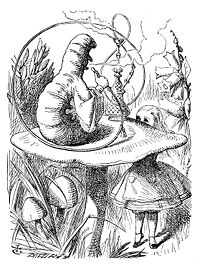
Photo from wikipedia
Lexical ambiguity is pervasive among Chinese characters as many of them are polysemantic, with one orthographic form carrying unrelated meanings, related meanings, or sometimes both unrelated and related meanings. A… Click to show full abstract
Lexical ambiguity is pervasive among Chinese characters as many of them are polysemantic, with one orthographic form carrying unrelated meanings, related meanings, or sometimes both unrelated and related meanings. A large-scale database with ambiguity measures for simplified Chinese characters has yet to be developed, which could greatly benefit psycholinguistic research on the Chinese language or cross-language comparisons. This article reports two sets of ratings by native speakers, the perceived number of meanings (pNoM) for 4363 characters and the perceived relatedness of meanings (pRoM) for a subset of 1053 characters. These rating-based ambiguity measures capture the representational nuance about a character's meanings stored in average native speakers' mental lexicon, which tends to be obscured by dictionary- and corpus-based ambiguity measures. Consequently, they each account for a reliable portion of variance in the efficiency of character processing, above and beyond the effects of character frequency, age of acquisition, and other types of ambiguity measures. Theoretical and empirical implications with regard to the plurality and the relatedness of character meanings, the two focal aspects of debate on lexical ambiguity, are discussed.
Journal Title: Quarterly journal of experimental psychology
Year Published: 2023
Link to full text (if available)
Share on Social Media: Sign Up to like & get
recommendations!